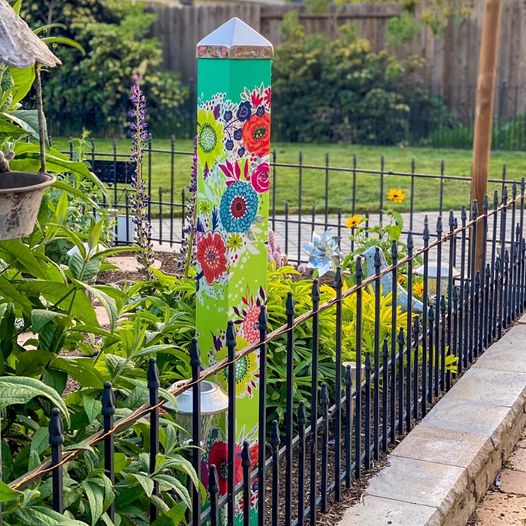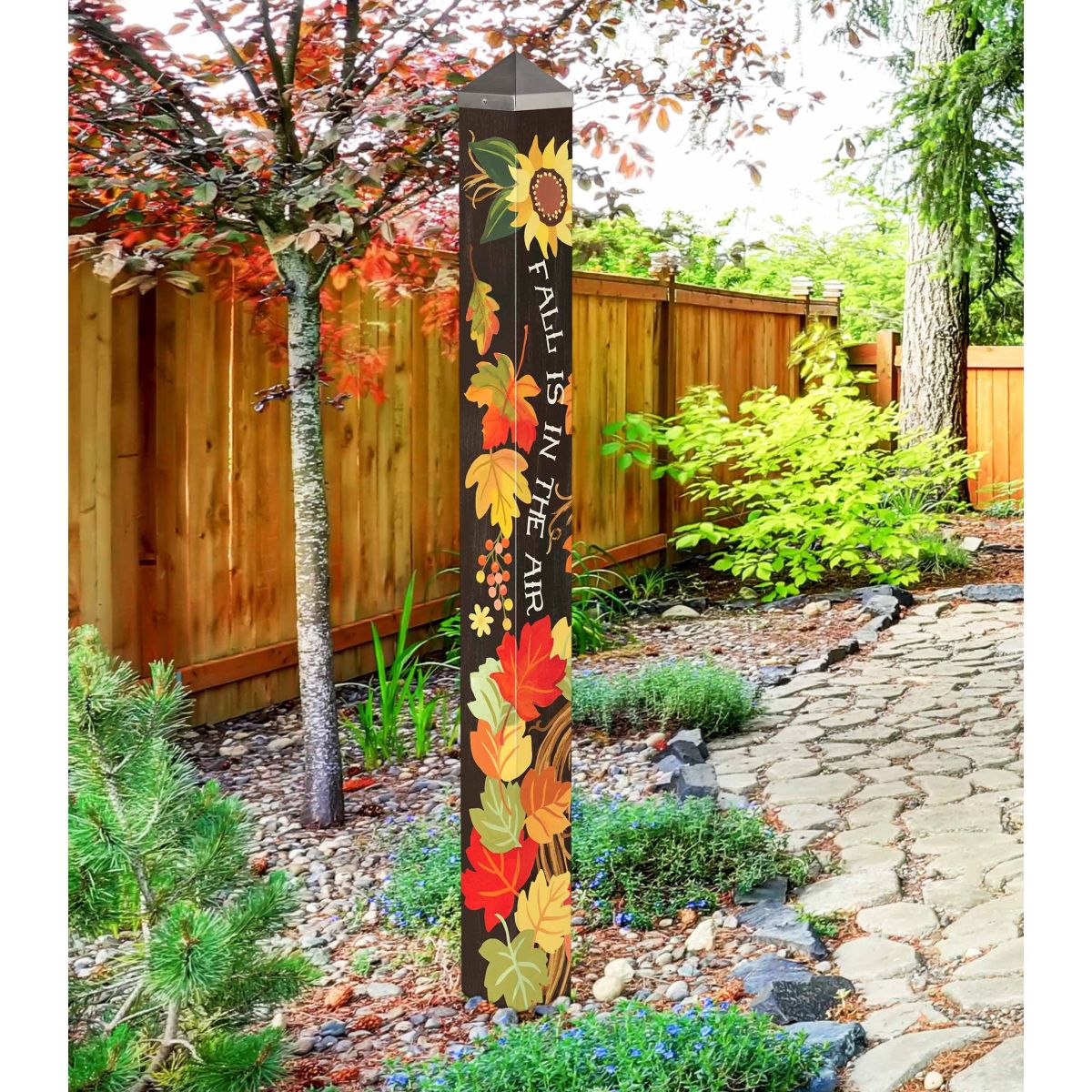When it comes to creating a magical outdoor space, decorative garden poles can be the unsung heroes of your garden design. These versatile structures not only enhance the aesthetic appeal of your landscape but also offer functionality that can elevate your gardening experience. In this article, we will explore the different types of decorative garden poles, their uses, and how to select the perfect ones for your garden.
What Are Decorative Garden Poles?
Decorative garden poles are functional and artistic features in outdoor spaces. They can serve as:
- Plant supports, such as trellises for climbing plants
- Garden markers or signs indicating different areas or plants
- Hanging decorations or lights to create ambiance
- Garden art that adds personality to your landscape
Types of Decorative Garden Poles

Understanding the various types of decorative garden poles available on the market can help you make informed decisions. Here’s a breakdown of some popular options:
1. Wooden Garden Poles

Wooden garden poles are a classic choice, bringing a natural feel to your garden. They can be used for:
- Supporting climbers such as roses or beans
- Creating rustic signage or markers

Pros and Cons of Wooden Garden Poles
| Pros | Cons |
|---|---|
| Natural aesthetic | Can rot if not treated |
| Versatile for various designs | Requires maintenance over time |

2. Metal Garden Poles
Metal poles, often made of wrought iron or aluminum, are ideal for contemporary gardens. They can be fashioned into elegant designs and are notoriously durable.

Pros and Cons of Metal Garden Poles
| Pros | Cons |
|---|---|
| Long-lasting and weather-resistant | Can be prone to rust, depending on material |
| Modern look that complements contemporary decor | Can be less stable than wooden poles |

3. Fiberglass Garden Poles
Fiberglass poles are lightweight and incredibly strong. They are often painted or coated to resemble wood or metal and can be used for:

- Decorative purposes with vibrant colors
- Supporting hanging baskets or lighting
Pros and Cons of Fiberglass Garden Poles
| Pros | Cons |
|---|---|
| Lightweight and easy to install | Can be more expensive than wood or metal |
| Weather-resistant and low-maintenance | Less natural look |
4. Decorative Garden Stakes
Garden stakes come in a variety of styles and sizes. They can feature whimsical designs like birds, flowers, or abstract shapes, serving both function and artistic flair.
Pros and Cons of Decorative Garden Stakes
| Pros | Cons |
|---|---|
| Adds instant charm to any area | May not provide strong support for heavy plants |
| Incredibly diverse in design | Can be damaged by high winds |
Choosing the Right Decorative Garden Pole
When selecting decorative garden poles, consider the following factors:
1. Purpose
Determine how you plan to use the poles. Will they support climbing plants, provide garden art, or serve as markers? Knowing their purpose will guide your choices.
2. Material
Choose a material based on durability and aesthetics. If you prefer a natural look, wooden poles may be ideal. For low maintenance and durability, consider fiberglass or metal.
3. Style and Design
Select designs that align with your garden’s theme. If you have a modern setting, opt for sleek metal poles. For a rustic garden, wooden or traditionally-styled poles may fit better.
4. Size
Size matters when choosing garden poles. Ensure they are tall enough to support your plants, but not so tall that they overwhelm the space.
5. Budget
Prices can vary significantly based on materials and design complexity. Set a budget beforehand to streamline your choices.
Decorative Garden Poles in Use: Personal Experience
As an avid gardener, I have experimented with various decorative garden poles in my own backyard. One particular experience stands out: I installed wooden poles to support large climbing roses. Not only did they add a romantic elegance to my garden, but they also created a stunning visual backdrop as they bloomed. Additionally, I added some whimsical metal stakes adorned with birds, which brought an air of charm and joy. Seeing friends and family admire these features made the effort worthwhile.
Maintaining Your Decorative Garden Poles
Once you’ve chosen the perfect decorative poles, maintenance is key to ensuring they last. Here are some tips:
For Wooden Poles
- Regularly check for signs of rot or insect infestations.
- Apply wood preservative every couple of years to extend their life.
For Metal Poles
- Inspect for rust and treat with rust-resistant paint if necessary.
- Wipe down to maintain appearance and prevent dirt build-up.
For Fiberglass Poles
- Clean with a mild soap solution and a soft cloth to keep vibrant colors.
- Avoid harsh chemicals that may damage the finish.
Incorporating Decorative Garden Poles into Your Landscape
Here are several creative ways to integrate decorative garden poles into your outdoor space:
1. Vertical Gardens
Create a vertical garden by attaching planters to tall poles. This not only saves space but also adds a unique element to your garden.
2. Lighting Displays
Wrap lights around poles to illuminate pathways or garden features, creating a cozy ambiance during the evening.
3. Seasonal Decorations
Change decorations on the poles with the seasons; use fall leaves and pumpkins for autumn, or ribbons and flowers for spring.
Comparison of Popular Decorative Garden Poles
| Type of Pole | Material | Best Use | Average Price Range |
|---|---|---|---|
| Wooden Garden Pole | Wood | Climbing plants, rustic signage | $10 – $50 |
| Metal Garden Pole | Wrought Iron, Aluminum | Modern decor, heavy-duty support | $20 – $100 |
| Fiberglass Garden Pole | Fiberglass | Decorative lighting, vibrant displays | $30 – $150 |
| Decorative Garden Stakes | Varied (metal, plastic, etc.) | Garden art, light plant support | $5 – $50 |
FAQs About Decorative Garden Poles
What are the best plants to grow with decorative garden poles?
Plants like climbing roses, peas, and vines such as morning glory thrive when supported by decorative garden poles. They not only grow higher but also spread out beautifully, enhancing the visual appeal.
Can I make my own decorative garden poles?
Absolutely! DIY garden poles can be made from repurposed materials or crafted from new ones. Consider using old wooden furniture, PVC pipes, or even natural branches to create unique designs.
How do I secure garden poles in the ground?
To secure garden poles, dig a hole at least one-third the height of the pole and fill it with soil, ensuring it is tightly packed. Alternatively, you can use concrete for larger poles needing extra stability.
How do I choose the right height for my decorative garden poles?
Choose a height that complements your plants and garden design. Generally, around 4 to 6 feet is ideal for climbing plants, while shorter poles can be used for stakes or markers.
Are decorative garden poles weather-resistant?
Many decorative garden poles are designed to be weather-resistant. However, the level of resistance varies by material. Metal and fiberglass typically offer better durability against the elements than untreated wood.
Conclusion
Decorative garden poles can transform your outdoor space from ordinary to extraordinary. With various materials and styles available, you’ll find the perfect poles that not only serve practical purposes but also add artistic flair to your garden. Whether you opt for wooden, metal, fiberglass, or whimsical stakes, these features can significantly enhance the beauty of your landscape. Remember, your garden is a canvas—let decorative garden poles provide the strokes of elegance and charm!